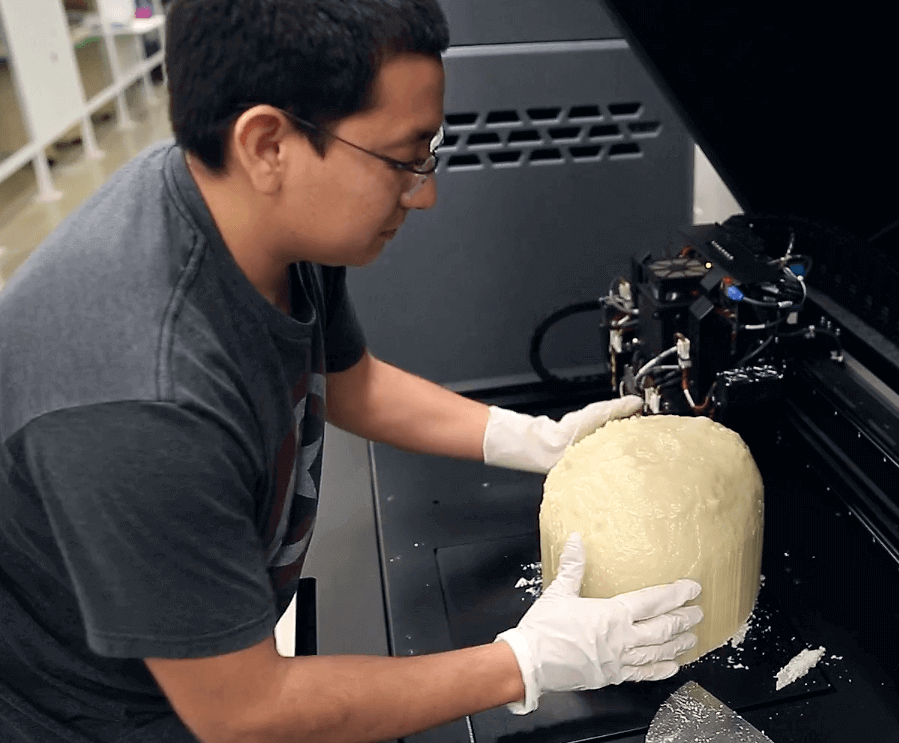Scientists at Arizona State University have developed a 3D printed model of the failed planet, Psyche, and plan to launch a mission to it in 2023.
Psyche is the name of what scientists believe to be a failed planet. Or rather, the core of a failed planet. It is located around 280 million miles from the sun.
However, scientists led by Arizona State University (ASU) are still learning all they can about Psyche. Indeed, a new project to reach the failed planet by 2030 – funded by NASA and led by the University – is already in the making.
One of the very first steps taken by researchers was to develop a 3D model of the asteroid. Using a laboriously created digital 3D model of what Psyche could potentially look like, they have now 3D printed a physical representation of the non-planet. The final 3D model has the appearance of a huge lump of defrosting ice cream.
Scientists currently have no images of Psyche and, beyond that, not much other information either. However, in order to create the model, scientists used “previously obtained radar returns” as well as scientific best guesses using other previously known factors of failed planets.
Lindy Elkins-Tanton, director of ASU’s School of Earth and Space Exploration, is the principal investigator of the Psyche mission. She explains the purpose of the 3D model, saying:
“It is really helpful to have visuals for people to interact with when we are talking about the mission… It will be easier to have people look at this while we try to explain what we might find when we get there.”
Psyche 3D Model is as Heavy as a Bowling Ball
The mission to Psyche isn’t one to put on your calendar just yet as it isn’t going to launch until 2023. It will then take seven years for the spacecraft to reach it.
“This is the first time humans will be able to explore a planetary core,” Elkins-Tanton said. “The mission will help us gain insights into the metal interior of all rocky planets in our solar system, including Earth.”
To develop the Psyche 3D print, Elkins-Tanton worked with artist Peter Rubin. Together, they spent a couple of years developing a digital rendition of what Psyche may look like.
Engineering associate, Eddie Fernandez, then took over. He used a Stratasys Objet 350 3D printer at the makerspace in the Technology Center on the Polytechnic campus to print the model.
Fernandez made a prediction about the print, saying: ”It’s going to be about as big as a basketball but as heavy as a bowling ball.”
Almost 87 hours of continuous printing later, they had their Psyche. Following the print, Fernandez cleaned supports structures away and finished the model with a three-hour sonic bath.
Elkins-Tanton intends to paint the model to make it more realistic. On her expectations of what the real Psyche will look like, she adds: “It’s going to surprise us, I’m pretty darn sure of that.”
Source: Arizona State University

License: The text of "The Making of a Failed Planet Called Psyche" by All3DP is licensed under a Creative Commons Attribution 4.0 International License.